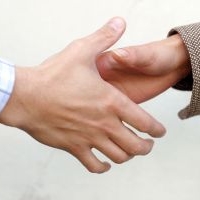Pair Testing—A Best Practice to Enhance Accessibility Test Coverage

Testers are always looking for new techniques to make their testing effort more productive and efficient. Pair testing is a technique that not many groups use for accessibility testing, but it is a best practice that we have been successfully using over the past few years.
Increasingly, organizations are bringing people with visual challenges or other disabilities into their accessibility test effort, but these testers still work in silos. Pairing testers with disabilities with nondisabled testers yields valuable results.
So, what is pair accessibility testing all about? It is as simple as having the disabled test engineer pair his test efforts and work with an accessibility test expert. Alternatively, the test engineer could work with a functional test engineer or another disabled tester, but you reap the highest returns when the pairing happens between a tester with disabilities and accessibility testers.
Let’s take the case of a visually challenged tester. His proficiency mainly focuses on those parts of the application that are in the range of his screen reader. Therefore, just asking if a feature works with a screen reader, isn’t enough. If the screen reader misses a certain frame or part of an application, there is no way the visually impaired tester can identify the issue unless there is a sighted tester nearby to help.
For example, let’s say there are four headings on a single page. A sighted user sees all four headings. However, if the heading tag is missing for the fourth heading, the screen reader would read the heading as plain text, which means the visually challenged user would think there are three headings.
Similarly, if the screen reader skips some links, their associated functionality will be missed. So, too, is the case of promotional banners or notifications that appear on a page but are skipped by the screen reader.
These are specific examples of where pairing is a great way to thoroughly test for issues. Another benefit is while a visually impaired engineer runs tests on a web page, a sighted accessibility engineer could run tests on similar pages, making the effort more productive.
Pair testing is a constructive approach to enhance test coverage. In an experiment we did, testing by an accessibility engineer alone revealed 22 percent of defects. Testing by a nonsighted engineer alone revealed 65 percent of defects. In the instance where pair testing was adopted, 100 percent coverage was achieved. (This number is based on the number of accessibility issues reported after product release.)
Pair testing does not mean working in pairs all the time. It essentially means a certain amount of time is set aside in a release cycle to work together to explore the product collaboratively. Try it and see the difference for yourself!

